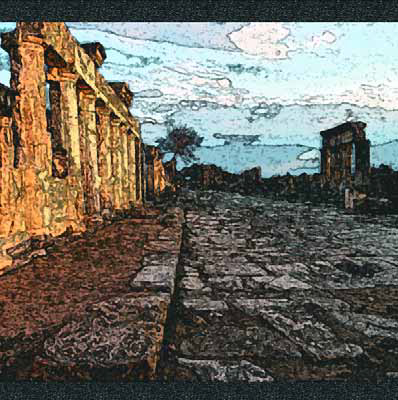travel
In just a few days, my wife and I will be heading out on a road trip that will take us to Yosemite and then on to the eastern slope of California’s Sierra Nevada Mountains. It’s been a while since we took a trip like this one. Last time, we had a great camping spot reserved in a meadow high above Yosemite Valley. When we arrived in the middle of that June, however, the campsite was still under about 14 feet of snow, so we had to make do in what was, because so many higher-elevation sites were
Back in the early days of WaterShapes, I recall a long breakfast conversation with David Tisherman in which we discussed the importance of travel as part of a complete design education. It was the summer of 1999, and I was on the hunt for artwork to go along with an article Mark Holden was preparing on the history of watershape design: David was known as someone who had traveled extensively and, more to the immediate point, was an avid taker of photographs of superior quality. He’d brought several sleeves filled with slides (remember them?) along to breakfast, and as we talked and I reviewed the photos, I was endlessly impressed by how meticulously he’d recorded so many places and details. I’ve always been a traveler, too, but I never much cared for
I’ve just returned from a mini-break in which my wife Judy and I and two friends spent two-and-a-half days scrambling around Yosemite National Park. Six months ago, we had reserved a campsite near Lake May, thinking
If you want to gain a full appreciation for classic fountains, pools or waterfeatures, you really do need to pack your bags: Seeing their beauty, power and subtlety at first hand gives us the opportunity to
By now, the thought that watershape and landscape designers need to study nature if they want to replicate it in their projects is basically a cliché. Truly, if you want to mimic nature successfully, you must first know it intimately. What many miss in all this, I believe, is a deeper level of “knowing” that goes well beyond simply observing nature as a source of techniques and ideas. Frankly, I think that as designers and as human beings, we are much better off when we also learn how to become nature – by which I mean letting the sights, sounds and smells draw us physically into the place. In doing so, we engage in experiences so profound that the mere mentioning of that place will set us off with memories we will share enthusiastically – or can use as parts of our latest projects. No matter how often I visit natural places, I’m always amazed at the
One of the most interesting things about running WaterShapes has been the opportunities I've had to get out and see projects, both in process and finished. Through the years, I've been treated to
It's a truism that almost all contemporary works of art are derivative: The ideas have already been expressed in one way or another at some point in history, and all we can succeed in doing is to apply those enduring forms as creatively as we can. We can't invent the wheel, but we can redraw it, embellish it, place it in context and, in our own ways, improve upon it through the choices we make in using it. To be effective in that sort of downstream effort as watershapers, it is essential that we understand the nature and origins of the basic building blocks of aquatic design. For years, people have asked me where I get my ideas - pools raised out of the ground, the small spillways, the drain details, the modular deck treatments, the color usage and the use of reflection, to name just a few. "Through my design education" is the short answer, of course, but I can get more specific if we



















Purposeful Travel